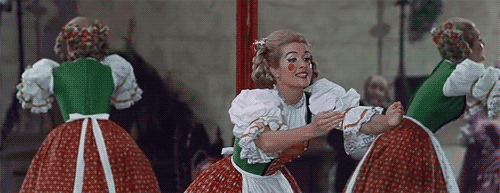The
‘Doll on a Music Box’ scene from
Chitty Chitty Bang Bang (1968) is one of my all-time favourite sequences in film history. This has always been a completely magical scenario for me, and in many ways set the tone for much of my own creative practice and the themes that I return to, over and over again.

Choreographed by the legendary team Mark Breaux and Dee Dee Wood (who also worked on Mary Poppins and The Sound of Music), ‘Doll on a Music Box’ sees the characters
Caractacus and
Truly, disguised as life-sized dolls, birthday gifts for the
Baron Bomburst, created by the toymaker (played by Benny Hill). In the song and dance duet that follows, our heroes (on a mission to save the children), pretend to be clockwork doll and rag doll to entertain and distract the self-centred, cantankerous and puerile Baron and his guests. This duet for me was a formative demonstration of the relationship between the body and technology. What is the difference between human and machine (clockwork in this case)? Where are the overlaps? How does it affect being human? What does it mean for a human to pretend to be a machine or a machine to pretend to be human? The scene ends with the uncertain Baron inspecting the life-sized dolls, scrutinising their authenticity. For me this is an ‘Uncanny Valley’ moment (where technology that has become too lifelike in its human features, tips the viewer’s experience from empathic to disturbing), just before the term was actually coined by robotocist Masahiro Mori in 1970.
Today, we are in the midst of profound (and often somewhat disturbing) advancements in robotics development. There are physiologically complex patient simulations, developed by companies such as CAE Healthcare and Laerdal, embodied with physical responses, such as voice, pulse, breath and tears. Geminoids are startlingly life-like looking attempts at human mimicking robots, developed by Hiroshi Ishiguro, Director of the Intelligent Robotics Laboratory, Japan. Created as body-doubles of real models (including Ishiguro), they are imbued with realistic facial expressions, that include smile, fidget and yawn. Most recently the decidedly sinister and highly sexualised robotics artwork (Female Figure) 2014, by Jordan Wolfson, was presented within the 14 Rooms exhibition at Art Basel 2014, suggesting that even the international art market is ripe and ready for robotics. The uncanny valley lurks within all these manifestations. Creative exploration and critique of the relationship between the body and technology is now as pertinent as ever.


